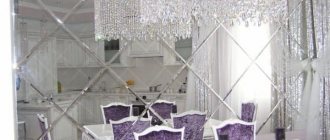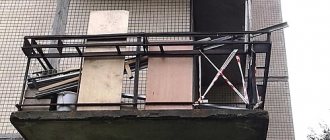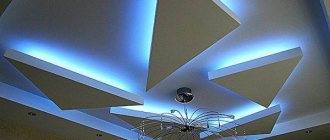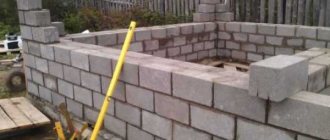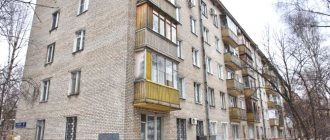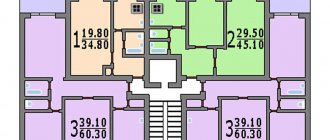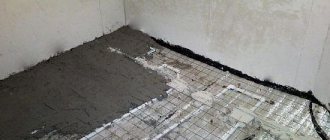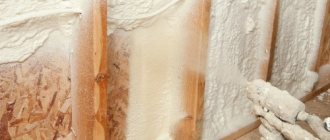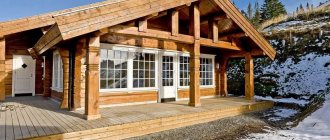Decorating the interior of a modern cottage with stone certainly allows it to look solid and representative; however, natural stone, in addition to being heavy, is also very expensive. On the modern market of facing materials there is a very high-quality alternative to bulky slabs - flexible stone. Modern cottage interior 75 photos - flexible stone in the interior:
Flexible or, as it is also called, soft stone, first appeared in Germany about ten years ago. This material is made from natural sedimentary rock - sandstone, the thinnest section of which, not exceeding 3 mm in thickness, is fixed on a special textile backing using polymers with binding properties.
The whole secret is that numerous particles of the rock do not fit tightly together, which ensures the flexibility of the stone.
Kitchen in Provence style: photo, 6 components and color trickGray kitchen with a wooden countertop and apron with bright accents in the interior: color combination - 38 photos
Kitchens with a Bar Counter: 118 photos (real) + 7 Types + nuances
This kind of cladding weighs little (a square meter of material weighs less than 5 kg), is amazingly durable and transmits light perfectly, the latter quality is highly valued by modern designers, as it allows you to create original interiors and advantageously emphasize the style of rooms with the help of proper lighting.
What is flexible stone and how is it made?
This is a new finishing material patented in Germany. This is a kind of three-layer cake, it consists of fiberglass, an adhesive mixture and the smallest particles of mountain sedimentary rocks - sandstone or marble chips. It is made using two technologies: manually (note to entrepreneurs) and in production. To make it yourself, you will need:
- The table is large and stable.
- Pallets with sides.
- Thick glass on which the slabs will be formed.
- Rack for drying finished products.
- Well ventilated area.
Marble or sand chips are sifted to remove large particles and, if necessary, painted with a special composition. The base - fiberglass - is placed on a pallet, covered with an adhesive composition and stone-sand chips are poured. Then they press down on top and leave to dry for at least a day. When it dries, all that remains is to shake off the stuck crumbs. This is a good and almost unoccupied niche for small and medium-sized businesses.
As for industrial production, it makes sense to develop it where there are sandstone deposits. A thin layer with a unique pattern is cut, sanded and glued to the base. Dry under pressure and remove from the base. The process turns out to be more expensive and labor-intensive due to the high cost of equipment, but the product is more durable.
Features of the material
It is much easier to work with artificial gypsum stone, since the desired shape can be easily cut. However, concrete elements cost almost 2 times less. For many, this factor is decisive in the process of choosing a finishing material.
A bright solution using artificial slate of different tones. The photo shows the hallway and part of the kitchen.
Advantages:
- The cost of repairs is less when compared with cladding with natural elements;
- The appearance of the material is as close as possible to the natural texture;
- The weight of artificial tiles is insignificant, so the walls do not experience significant load. In addition, lightweight elements are quite easy to lay, creating a flat surface;
- Due to its ecological composition, it can be used for interior decoration;
- Fungus does not form on such a stone, since the rotting process is not supported;
- Easy maintenance during operation;
- High strength indicators. This factor is important, because the kitchen and hallway are the most visited parts of your home;
- A large selection of shades will allow you to effectively combine stone with wallpaper.
Flaws:
- Price. Finishing with decorative stone material is not an economical option;
- For many, the disadvantage is the cold surface of the elements;
- The material is exposed to high temperatures, so when choosing, it is important to consider the purpose of the room and operating conditions.
Properties of flexible stone
So, flexible stone is a new generation finishing material. Its advantages:
- Does not burn, does not allow water to pass through.
- It is environmentally friendly and contains no toxic substances. The decorative layer is of natural origin, and the bonding composition is absolutely harmless.
- Durable, can last for decades. Designers guarantee trouble-free operation for 35 years.
- Easy to install and use, leaving no waste.
- Not subject to temperature changes.
- It is universal - it is used for both interior and exterior decoration.
- It is very flexible, and this is its main advantage. Allows you to cover any surface without any problems.
- And, of course, it is not afraid of microorganisms and high humidity.
- Frost-resistant.
- It is lightweight and does not create a load on any building structures.
- In operation, it can withstand temperatures from -45 to +65 degrees.
- Can be mounted on any surface.
- Lastly, he is simply beautiful. Its unique appearance gives great scope for designers.
You can cut it using a regular construction knife or scissors. Well, are there any disadvantages? So far, only one serious drawback has been identified: the high price.
Advantages and disadvantages
Before moving on to considering the advantages and disadvantages of flexible stone, it is necessary to present the characteristics of the material, some of which are positive properties:
- the weight of one square meter does not exceed four kilograms;
- operating temperature range is from -45 to +700 degrees Celsius;
- withstands up to 100 freeze/thaw cycles;
- low flammability, class G1 in accordance with GOST 3044-94;
- the texture corresponds to natural decorative stone.
Flexible stone Classic 1 in a roll. Photo by SENATE-TECHNOGROUP
The main advantages are:
High flexibility and elasticity. The structure of the material resembles ordinary wallpaper, which greatly facilitates installation and allows you to implement almost any idea. The ability of the material to follow various surface curves ensures its use for cladding objects of any shape. To cover structures with sharp corners, it is possible to use a heat gun, which will help the wallpaper take the required shape. Thus, the material also has versatility and functionality.
Environmental friendliness. The flexible stone contains only environmentally friendly and safe components; there are no toxic impurities, radioactive additives, or decomposing compounds. This allows you to use stone for cladding surfaces in any room.
Fire resistance. The material retains its own properties at high temperatures. Technical characteristics ensure low flammability of the stone. It is fire resistant, does not ignite when exposed to high temperatures and does not support combustion. Therefore, flexible products are used for cladding fireplaces, baths, saunas, kitchens and individual elements of these premises.
Ease. The thinnest layer of stone does not weigh down the cladding. As a result, it is possible to decorate thin and fragile interior and exterior parts with stone. In terms of the weight of one square meter, flexible stone has no equal.
Flexible stone Monochrome-5 in the fireplace lining. Photo PC Flexible Stone
Durability. High wear resistance ensures long service life. Manufacturers and specialists claim a 35-year warranty period.
Frost resistance and resistance to sudden temperature changes , which allows the stone to be used for cladding the facades of buildings located in the northern regions.
Light transmission allows the stone to be used to decorate lamps, which helps create a cozy and calm atmosphere. Or you can make interesting lampshades for lighting fixtures from flexible stone.
Air permeability allows the stone to maintain natural ventilation and prevent the formation of condensation, and, accordingly, ensures optimal indoor conditions.
Lack of reaction to moisture and regular contact with water , water resistance, which allows the material to be used for finishing problem areas: bathrooms, saunas, swimming pools.
Flexible stone, Golden Autumn marble in the form of tiles. Photo by SENATE-TECHNOGROUP
Easy to install. Cladding with flexible stone does not require any special knowledge or skills; anyone who has ever hung wallpaper can handle the job. The products are easily cut with scissors or a knife.
The ability to obtain a seamless coating by achieving the creation of a monolithic coating.
A variety of shapes, textures and colors , which allows you to choose products for the design of any room, select products of the optimal size and avoid unnecessary cutting.
Easy to maintain , does not require special measures, just periodically wipe the coating with a damp cloth. The rough surface promotes the accumulation of dust, which can be easily removed with a regular vacuum cleaner.
Cladding with flexible stone brings sophistication and elegance to the interior and façade of buildings. If we add to this vapor permeability and antistatic properties, it becomes clear why the material is so in demand.
However, the stone also has disadvantages. The main disadvantage is the high cost . To obtain a cladding that meets all of the listed properties, you must choose high-quality products from a trusted manufacturer . The price also depends on the production technology. One way or another, the cost of flexible stone is close to the prices at which natural rock is sold. That is why many potential buyers are interested in self-production technology.
Another disadvantage is the high requirements for the quality of the base . The surface intended for cladding must be flat. Base defects increase installation time and work costs.
A large number of counterfeits increases the likelihood of purchasing products that do not meet the declared characteristics. For its manufacture, binding elements are used, which make the finished products difficult to bend and provide them with a rough surface. As a result, the products do not adhere well to the base, and over time there is a high probability of cracks forming.
Types of flexible stone
- Stone wallpaper. Just like regular wallpaper, it is produced in rolls, just like regular wallpaper, it is used mainly for interior wall decoration. And they glue them in exactly the same way, with the only difference being that the sheets must be glued closely, avoiding overlaps. Layer thickness is 1-1.5 millimeters.
- Stone tiles. It is thicker than wallpaper - about 2-5 millimeters. Used to cover floors and house facades. The size of the tile and its color leave room for the imagination of customers and designers.
- Sheet flexible stone - has the same thickness as tiles, but is produced in plates. The dimensions of the sheets vary widely, but the maximum size is 250 centimeters.
- They are based on polystyrene foam. If you cover the facade with thermal panels, the energy efficiency of the house will increase.
Well, now let's see where and how this amazing material is used.
Decorative tiles, brick-like and other types
There are three main types:
1) Wallpaper or rolls , some suppliers call this type “sheets”. It is the most popular option. They are produced in the form of a canvas with a thickness (on average) of 1 mm, which is sold rolled up, i.e. in rolls of various sizes. But there are also standard dimensions - 1200x2600 mm. Wallpaper is the optimal solution for wall cladding ; it is most often used for interior decoration. The rolls easily lie on a smooth surface, on objects of convex and concave shapes, and follow the curves of the base, emphasizing the relief. Installation is carried out using almost the same technology as conventional wallpaper, i.e. the canvases are fixed to the surface using an adhesive composition . Manufacturers offer a large number of interesting solutions : flexible stone to look like bricks, applying frescoes to canvases, etc. Some enterprises offer favorable conditions for purchase.
Attention. Installation is carried out WITHOUT overlapping one sheet onto another. The volumetric texture will only highlight finishing errors.
2) Tiles. The main difference from the first type is the thickness, which is 2.5 mm. Tiles are available in a wide variety of sizes. The minimum standard is 80x265 mm, the maximum is 340x550 mm. This allows you to use tiles both for wall cladding and for decorating individual areas: arched vaults, steps, fireplaces, etc. Manufacturers meet customers halfway and produce products in individual sizes . Color solutions are limited only by the imagination of businesses and consumers. Natural-looking tiles that imitate natural noble materials are available for sale.
3) Thermal panels. All types of stone cladding have increased heat resistance, but for finishing stoves, saunas, fireplaces, chimneys and other surfaces that heat up to significant temperatures, it is recommended to use thermal panels. They can easily withstand temperatures up to 700 degrees. They are also used for cladding facades, balconies and loggias, walls and other surfaces. Extruded polystyrene foam or façade foam is used as a base.
Scope of application of flexible stone
Flexible stone is used for:
- Cladding of facades, ground floors.
- Wall decoration in offices and residential premises.
- Decoration of the fireplace area.
- Finishing the work area in the kitchen (kitchen apron).
- Wall decoration in swimming pools, bathrooms, toilets.
- Decoration of stairs and fences in gardens.
- For small decor (lampshades for lamps, for example).
As you can see, the scope of application of this material is very wide, and its demand is also high.
Stone decor in extreme conditions: kitchen and bathroom
The use of artificial stone to decorate the walls of rooms with high humidity or sharp temperature fluctuations (bathroom and kitchen) requires a special approach and some precautions.
Decorative stone in the kitchen
Although artificial stone has higher strength and performance characteristics compared to natural types of granite or marble, it is still susceptible to the destructive effects of water, high temperatures, and hot steam.
Kitchen using stone
Therefore, if the desire to have a wall made of artificial brick in the kitchen is great, then it is better not to place it next to the stove, so as not to waste time removing grease stains, or to treat it with special protective compounds (varnishes, water repellents).
Apron and countertop made of artificial stone
If you use stone in the interior of a bathroom, then its use assumes the presence of a voluminous space, since a small room lined with stone fragments will seem even smaller and cramped.
Artificial stone in the bathroom
If the dimensions of the bathroom allow it, then using stone masonry, large-format slabs for styles that embody the 20th and 21st centuries, or columns with capitals, relief inserts, sculptures that turn the room into antique baths is quite justified.
Artificial stone in the toilet
Bathroom with stone wall
Features of using flexible stone
Let's talk about the application features using the example of stone wallpaper. As already mentioned, they can be used for interior wall decoration, and it will be a very beautiful and durable coating. However, to really make you happy for a long time, strictly follow the instructions.
- Before finishing the walls, you need to prepare them - treat them with antifungal impregnation.
- The glue must be selected in accordance with the polymer that was used to create the wallpaper.
- The glue is applied only to the wall, the back side of the wallpaper remains dry, and it is better to wipe it with a dry cloth before installation.
- Stone wallpaper is heated with a hair dryer so that it adheres better to the surface.
- They must be glued “at the joint”; when pasted “overlapping”, thick wallpaper will immediately reveal errors in the finishing. However, in this case, the seams can be softened by heating them with a hairdryer and then rolling them with a roller.
- Press the wallpaper against the wall with a roller so that it sticks better.
- Remove the protective film from the material with which it is sold. Yes, this needs to be done after installation is complete.
The joints between the wallpaper, if they are noticeable, can be covered with paint to match, or rubbed with wallpaper scraps. You will be able to see what you have achieved only upon completion.
How to correctly calculate the number of panels for walls
There should not be any difficulties in resolving this issue. The main task here is the correct measurements of the wall. It is necessary to add 12-15% to the calculated area. This number of tiles or panels will be used for adjustment during installation.
If it is not planned to lay stone along the entire wall, then only the area expected to be covered is calculated. Below you can see examples of combined finishing in photo examples:
Flexible stone for flooring
Stone tiles are an excellent material for flooring. Its advantage is that it is not necessary to pre-level the surface. Lay it down starting from the far corner. After laying the tiles, you need to remove the remaining adhesive and be sure to rub the seams using a special compound and a regular brush. Don't forget to also remove the protective film from the product. “Stone” floors look great in “palace”, art deco and classic styles. Flexible stone can withstand heavy physical load, so it is used where increased strength is required - in the bathroom, in the kitchen.
Color spectrum
This decorative finish can also come in different colors, such as white, black, pink, grey, brown, beige, yellow, red or red-black.
The photo shows a fireplace with pink decorative stone trim in the interior.
Black cladding is always particularly mysterious, attractive and can be perfectly combined with both plain and contrasting shades. The design in red color harmoniously combines with bright and dark interior elements, the finishing in beige or brown tones, due to its naturalness, fits into rooms with any design.
The photo shows the interior of a dining room with a wall lined with decorative beige stonework.
To obtain a certain color, special coloring pigments are used to achieve an even, uniform shade of the surface, and then the front surface is painted using tinting agents, thus obtaining a color that is as similar as possible to natural stone.
Flexible stone in the kitchen
There are other uses for this material in the kitchen. What do we expect from a kitchen apron?
- Strength.
- Moisture resistance.
- Insusceptibility to temperature changes.
- So that it does not absorb dirt and odors.
- To be easy to clean.
- To look presentable.
Flexible stone has all these qualities. In addition, it is easy to install and does not deform. A stone apron and stone countertop will give your kitchen an aristocratic look.
Cost of decorative material in Russian markets
The price range for such material is quite wide. It all depends on the type of tile or panel, as well as the region of sale. Let's try to summarize the average data:
| Brand | Collection | Texture | Size of tiles in packaging, m2 | Cost, rub./m2 |
| CAMELOT | Manhattan | Brick | 1 | 700 |
| CAMELOT | Althea | Brick | 0,8 | 950 |
| WHITE HILLS | Dorset Land | Rock | 0,33 | 1000 |
| CAMELOT | Dixon | Rock | 0,48 | 1150 |
| CAMELOT | Narva | Stone | 0,55 | 1100 |
| WHITE HILLS | Montebello | Rock | 0,43 | 600 |
This is approximately the cost of a similar product in online stores. However, you should understand that prices may be higher at regular counters.
Ceiling decoration with flexible stone
We laid the tiles on the floor, but they can be laid on the ceiling in the same way. This is a truly flexible material, so you can make a ceiling of any configuration. A variety of colors gives room to the imagination and allows you to choose the right tone for any interior style.
Artificial stone lighting options
- Edge inlay with light-conducting color.
- The glow comes from below.
If you combine a flat surface with decorative elements made of artificial stone, you can achieve a relief effect with different color shades when backlit. Illuminated window sills that flow into the countertop without a visible seam give the kitchen a cohesive look. Bar counters or reception desks with light-changing contours are not only a convenient and beautiful thing, but also a practical element that changes color depending on the mood of restaurant visitors. The use of illuminated artificial stone in office decor is an additional bonus to the reputation of your company; it is the first thing a client or future business partner sees when entering the company’s office.
It is important to choose the right location and radiation of light, the shade of the stone, and additional lighting sources, so as not to make the room gloomy and uncomfortable. Artificial stone lighting is a self-sufficient decorative element and does not require additional decorations. The surface speaks for itself; it is enough to highlight the material a little, and the texture, relief, texture of the stone will sparkle with new colors, focusing attention on itself.
Flexible stone in damp areas
The material is not afraid of high humidity, so it is actively used in rooms where this very humidity is in excess: in bathrooms, bathhouses, saunas, swimming pools. The flexibility of the material allows you to paste it over even plumbing fixtures. The color palette does not limit the choice of style.
Decorating arches and columns with flexible stone
It is good to use flexible stone to decorate interior arches. It is beautiful and durable, does not weigh down the interior. In this case, the arch can be of any shape - straight, semicircular, figured - the material, as already mentioned, is very plastic. If you have an arch with columns, then cover them with flexible stone as well.
Advantages and disadvantages
Advantages and disadvantages of this facing type.
| pros | Minuses |
| It is very strong, durable and fire resistant. | Due to moisture permeability, it requires treatment with special solutions. |
| Not susceptible to mold and mildew. | |
| Easy to care for. | It has complex installation and processing. |
| It goes well with various finishing materials, such as wood, metal, glass and others. | |
| It has a large number of colors and textured patterns. | The better the quality of the material, the higher its cost. |
| Thanks to modern technologies, it is a non-heavy and non-deforming wall cladding. |
External cladding with flexible stone
Everything that has been said above concerns the interior decoration of the room. Now let's see how it can be used outside. Let's start with the stairs. The material is often used to decorate stairs and railings. Most often it is a flexible stone made from marble chips. The staircase looks very rich, the steps are resistant to abrasion.
Finally, the time has come to talk about cladding the facade of the house with flexible stone. There are some nuances here.
- Before starting work, the surface must be carefully prepared: cleaned of dirt, leveled, sanded, and primed if necessary.
- Prepare the adhesive composition according to the instructions.
- Apply a thin layer of it to the surface of the house.
- Press the sheet or tile against the wall and smooth it out well.
- Dry with a hair dryer.
- Apply a topcoat to protect against adverse weather and mechanical damage.
Your home will look very stylish. Want to add even more originality to your look? Combine it with other materials, such as wood.
This material is also used in landscape design - in the decoration of flower beds and gazebo fountains. They can be used to lay out paths in the garden.
Combinations of stone with other finishing materials
The most harmonious combinations:
- Tree. This combination will give the design a special originality, combining rustic simplicity, industrial brutality and natural grace.
- Wallpaper. Decorative stone, due to its uniqueness, can be easily combined with any wallpaper or even photo wallpaper.
- Tile. An ideal duet, distinguished by naturalness and at the same time original creativity.
- Decorative plaster. It is a very successful tandem that always looks noble and elegant.
- Painting. This combination is a classic and most commonly used design solution.
The photo shows a decorative stone combined with photo wallpaper in the interior of a modern living room.
Various combinations will give the atmosphere a special historicity, add natural motifs to it and enhance the naturalness of the design.
Flexible stone decor
Flexible stone is widely used as decoration. This material is translucent, so it is especially good as lampshades or shades for lamps.
The result is very soft diffused light. The absolute non-flammability of the material makes it possible to decorate a fireplace with it. If you place a painting or figurine in a niche covered with stone wallpaper, they will sparkle with completely different colors. Cover the windowsill with flexible stone and your green plants will simply bloom against this background.
The material is used as the basis for a design applied using ultraviolet printing.
Apply it to a wall covered with stone wallpaper and get an image that will not fade for many years. It does not matter where it is located - in the living room or in the bathroom.
Stone in different interior styles
The choice of decorative stone is so diverse that it can be used in any design, from Provence to high-tech. Let's consider how to choose a decorative stone for a specific interior style in order to emphasize its features and advantages.
Country
Styles that refer us to the interiors of cozy country houses (country, Provence, shabby chic, chalet) are difficult to imagine without finishing with natural stone. In older homes, stonework on the walls is often retained or exposed, paying tribute to the history of the home. Something similar can be recreated in an apartment by lining a wall or a fragment of it with voluminous slabs or cobblestones imitating wild stone.
Decorating a fireplace with wild stone in a country interior
Decorative stone tiles in a rustic style on a kitchen backsplash will bring a special rustic charm to the room. The warm shades and rough texture of natural dolomite, travertine, sandstone or their man-made analogues are suitable for finishing the floor in a country-style dining room, living room or bathroom.
Natural stone emphasizes the country style in the bathroom
Whitewashed brickwork, with the effect of slight negligence, is also often found in Provencal interiors. Stone can decorate not only walls and floors, but also a fireplace or an improvised hearth.
The fireplace is finished with natural stone tiles
The chalet style is characterized by a combination of massive wooden furniture, open ceiling beams, leather and fur with large stones on the walls and floor. It’s hard to imagine such an environment without a hearth with relief stonework.
Luxurious chalet style living room with stone walls
A country-style interior is always filled with homely warmth and natural aesthetics; glossy stone textures will be inappropriate; it is better to give preference to matte, rough surfaces.
Loft
Loft-style interiors have confidently migrated from public spaces to residential premises. Industrial aesthetics, metal structures, exposed pipes should be combined with raw, rough stone.
Kitchen-living room in loft style
Too glossy and elegant textures are alien to the loft. Choose concrete slabs; they may have scuffs and stains, even impromptu stains of paint or rust.
Features of using flexible stone
It remains to focus your attention on a few more important points.
- Don’t get too carried away with it: don’t decorate the walls, ceiling, and floor with flexible stone, it will look too intrusive.
- In small rooms, use it carefully, otherwise you can overload the interior.
- The shade of the flexible stone should be in harmony with the color of the furniture in the interior.
- If you lack experience, entrust the interior design to a professional, otherwise the result may disappoint you.
- Do not use flexible stone of the same color. A harmonious interior is achieved if different shades of this material are used.
- If you coat the flexible stone with varnish, its service life will increase.
Of course, the option of finishing with flexible stone cannot be called budget. This position compensates for the long service life. Decorate your interior this way, and you will forget about repairs for decades. We hope that the article has given a comprehensive description of this amazing material.
Features of choosing color, size and texture
Here everything will depend on the style direction chosen for the interior. For example, if you plan to decorate in a classic style, then calm, pastel colors are more suitable. In any case, the decision is made by the home master, based on wishes and preferences.
Helpful information! You should not decorate the hallway in dark colors - this will narrow the already small space. But for the bedroom, on the contrary, you can choose something darker.
Also, the choice of color, size and texture will depend on the surface on which the material will be laid. If textured tiles are quite suitable for walls, then you should choose a smooth floor covering.
